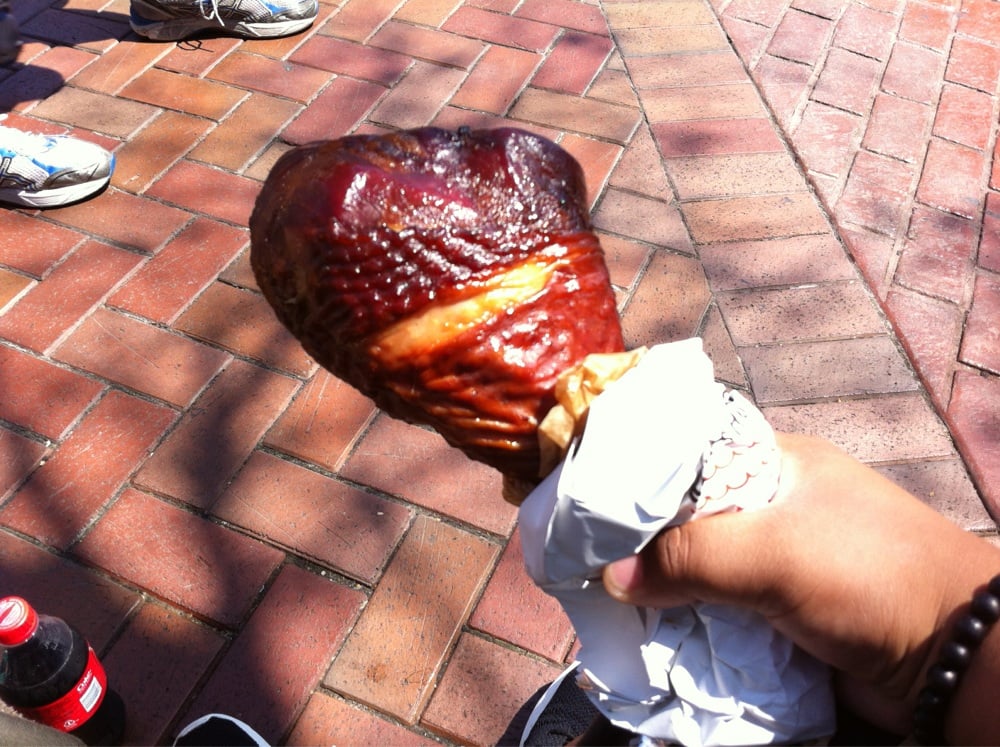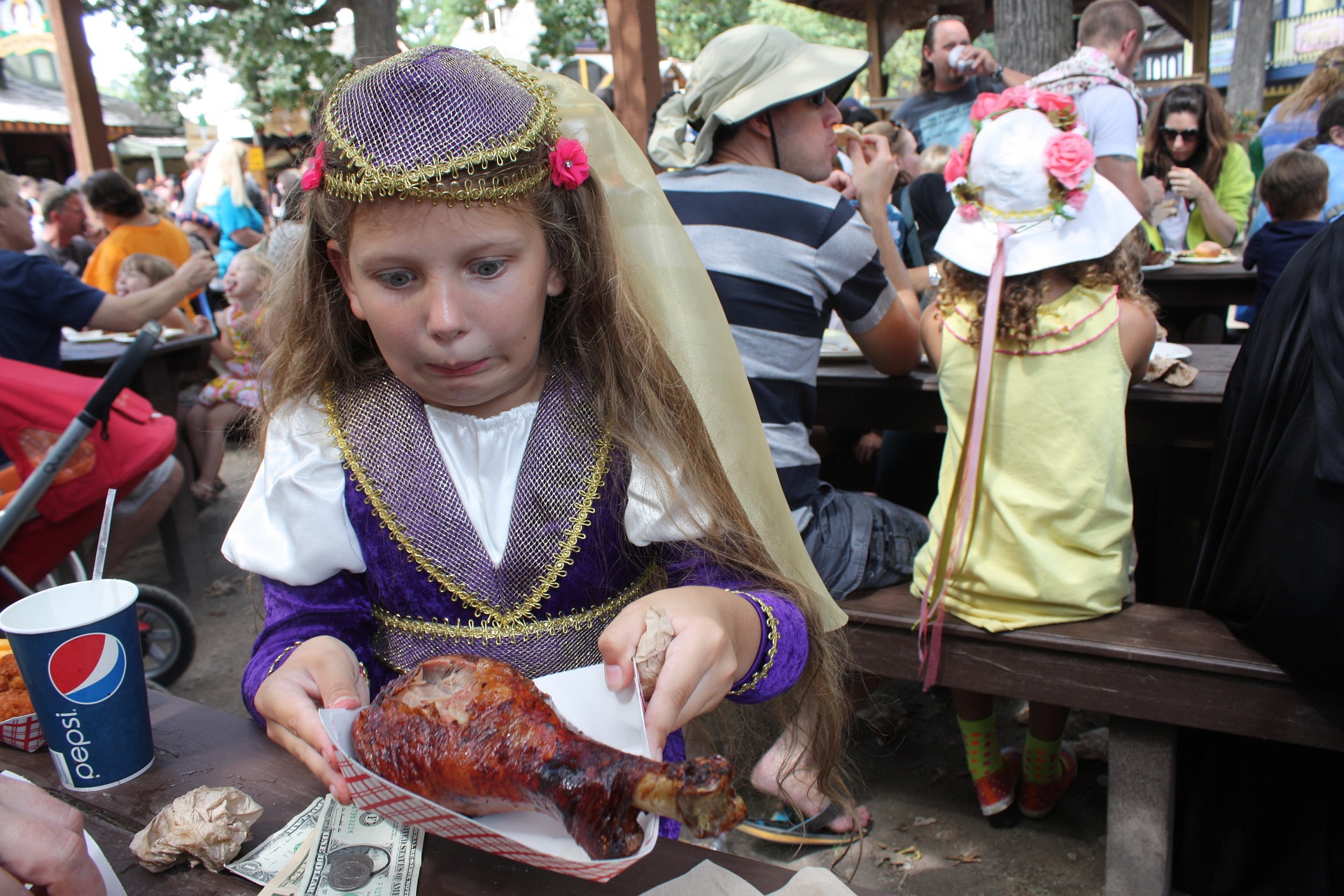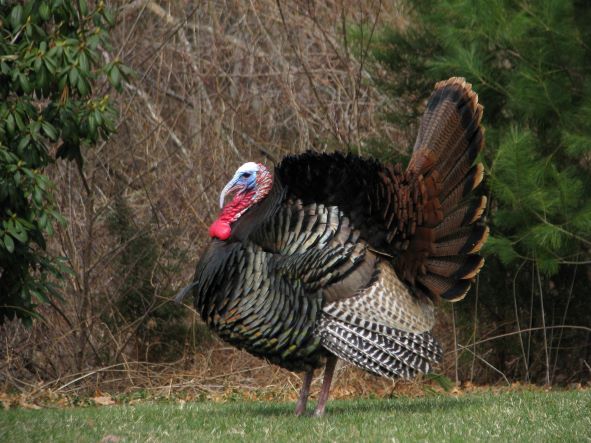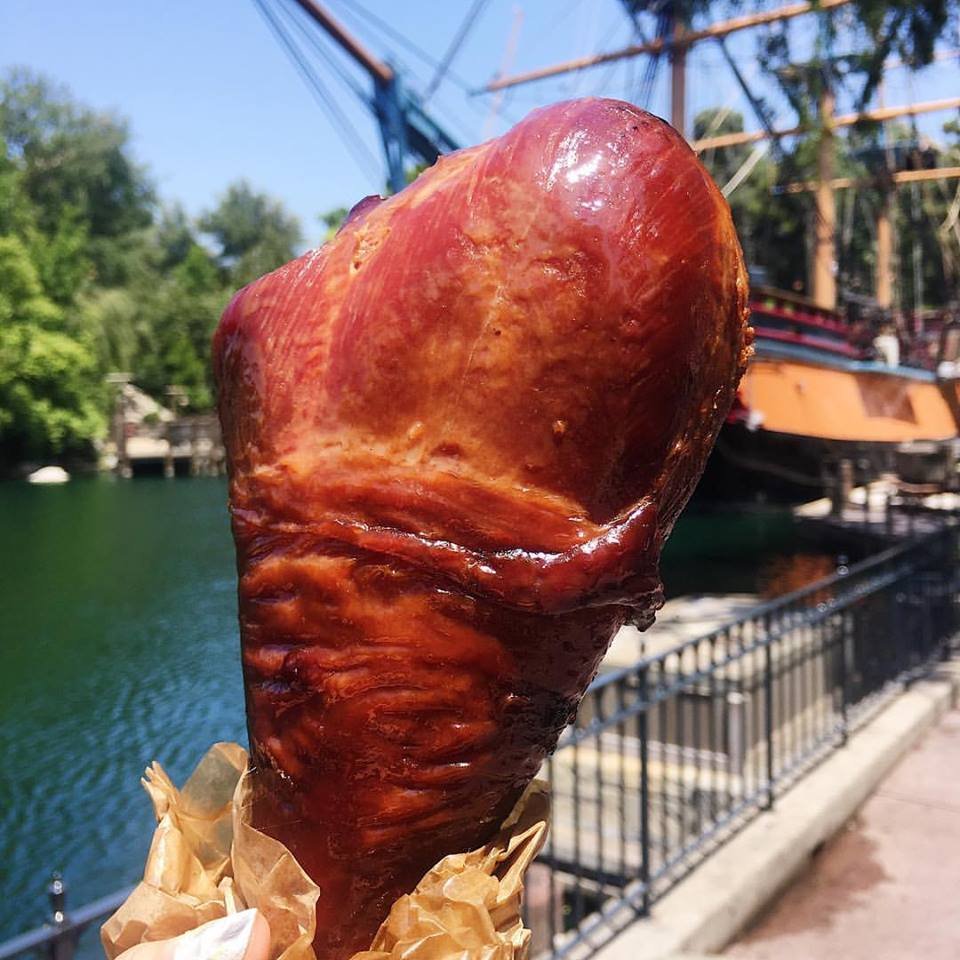The USA loves turkey legs, and so do I. These massive protein appendages are popular at iconic entertainment parks like Disneyland, themed restaurants, state fairs, and roadshows. There are even specialized turkey leg restaurants that have opened up across the country.
During my once frequent jaunts across the United States, I’ve eaten one or two turkey legs along the way. Nothing screams meat-eater like someone pillaging a turkey leg, both hands grasping the bone and ripping into the meaty flesh like the prehistorically possessed. Brandishing a huge piece of fowl like a club is also one of life’s most unexpected pleasures.

Now that these birds are in the rearview of my enjoyment, my appreciation has given way to questions:
- What is the turkey leg’s history as a delightful food option?
- Why are turkey legs so visible in the United States?
- Why do they taste like ham, and are they healthy?
- Which turkeys do these epic drumsticks come from, and can I ride them into battle?
With those questions in mind, I’ve been eager to find out why these turkey legs remain a beguiling part of the United States food landscape.
History

First, it must be made clear that despite what film and television may tell you, giant turkey legs were not consumed in Europe during jousts, tournaments, and feasts during the Middle Ages. The giant turkeys we know and love are native to North America and Mexico. The birds from Europe were much smaller turkey fowl but looked close enough to their larger brethren that after American settlement the name stuck.
The origins of turkey leg popularity come mainly from renaissance fairs and medieval themed restaurants during the latter half of the 1900s. The performance oriented experiences wanted to come up with an archaic looking option that their revellers could tear into at a reasonable price.
The giant turkey leg has also been a stalwart food item at State Fairs and carnivals across the country for more than 50 years. But, while turkey legs were popular at food stalls and fairs, it wasn’t until a famous mouse got involved that the giant bird leg became truly famous…
The Disney Effect

The giant turkey leg premiered in the late 1980’s with strong sales at Big Al’s Coonskin Caps in Frontierland at the Magic Kingdom. It wasn’t long before their popularity meant the turkey legs were made available at all six Disney parks in the US.
Despite a concerted effort to make their food concessions more health conscious at Disney, the giant turkey leg remains one of the most popular (and polarizing) foods available. While arguably the least healthy snack (see below in nutritional facts), people purchase around 1.5 – 2 million giant turkey legs every year.
In 2013 the New York Times featured a front page of the New York Times entitled “Turkey Legs Conquer Land of Mouse Ears.” Even though the turkey leg has copped criticism from animal welfare groups and the healthy eating movement, the turkey’s popularity is such that it is unlikely to be removed from the parks’ menu.
Is it really a turkey leg?

Two notable items that have caused controversy and conspiracy theories is the giant turkey legs. For many used to their more average sized, white fleshed Thanksgiving turkey, the combination of size and flavor has left them skeptical.
Urban legends dating back to the early 90’s suggested that they were made from emu legs, not turkey. This rumor was propagated further by Tangled and Chuck actor Zachary Levi on Conan in 2017.
Disney was forced to make a statement debunking this claim, which has been backed up by fact checking site snopes.
Turkey legs are actually made from male turkey’s called Tom’s. Male turkeys’ can reach up to 50 lbs. in size and their legs are considerably larger than female birds, which are more likely to land on your dinner table.
Disney makes sure to purchase only the biggest Tom turkeys available in keeping with the ‘giant’ look required for all those photos on Yelp and Instagram. Unfortunately for me though, it means that these turkeys aren’t big enough to carry me into battle. I’ll have to go and catch an emu instead.
As for that deliciously salty, hammy taste you get when demolishing a giant turkey leg? According to Babble Top, Tom meat can be quite tough, so to tenderize and preserve the leg it is injected with a pink salt solution, then cured and smoked over a period of 24-36 hours in a fashion not too dissimilar to making ham.
Nutritional Information

The excellent Disney Tourist blog suggests that the jumbo turkey leg “is probably the single worst thing you can ingest at Walt Disney World or Disneyland.” Despite that, they loved how yummy it was despite the mess!
The facts below, courtesy of Cheatsheet, paint a rather daunting picture of the turkey leg’s nutritional numbers:
Simply put, eat your turkey leg for enjoyment and maybe some quick protein, but do it only occasionally, because they aren’t healthy at all.
Conclusion
It’s a testament to the popularity of the giant turkey leg that it’s still available – and beloved by many – at Disney theme parks and state fairs. The big bird is a jolly good piece of protein power, and messy fun to eat with your bare hands. Just don’t ever think it’s a healthy option!













